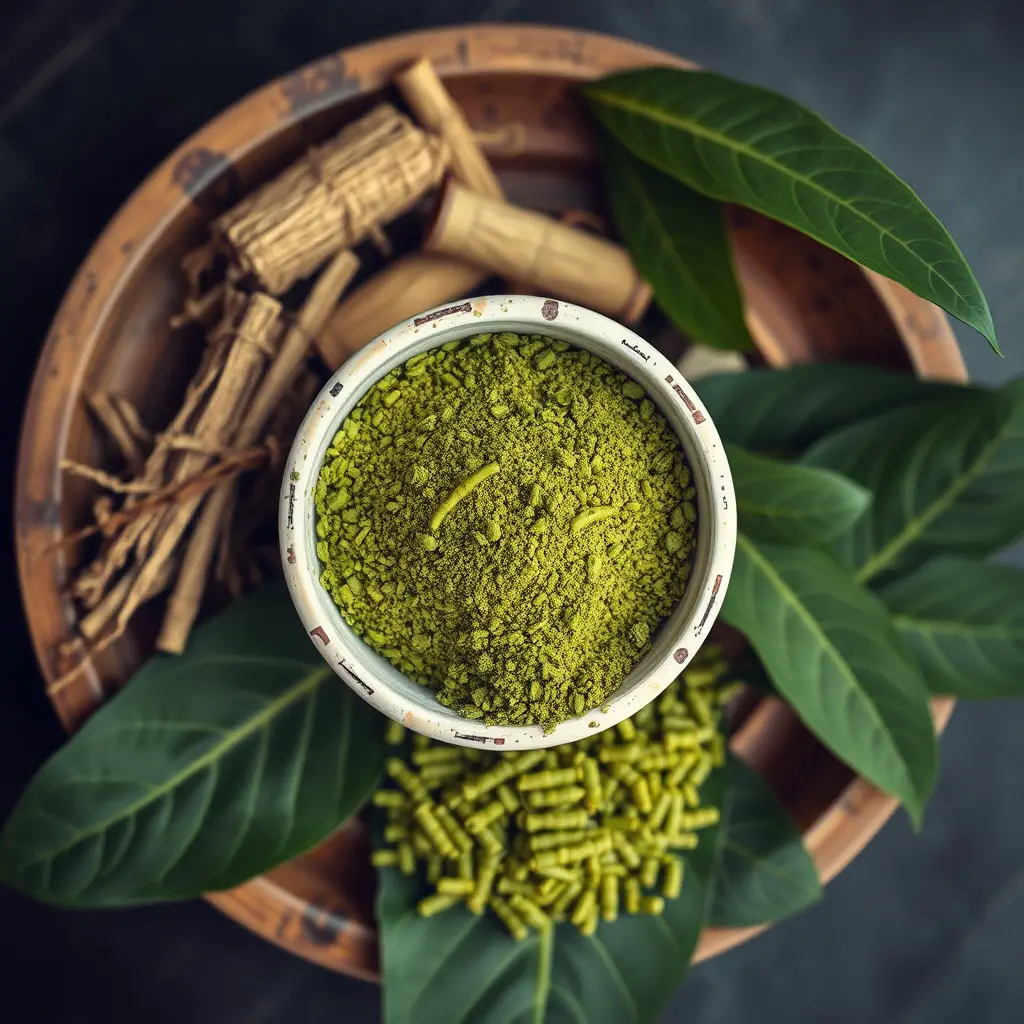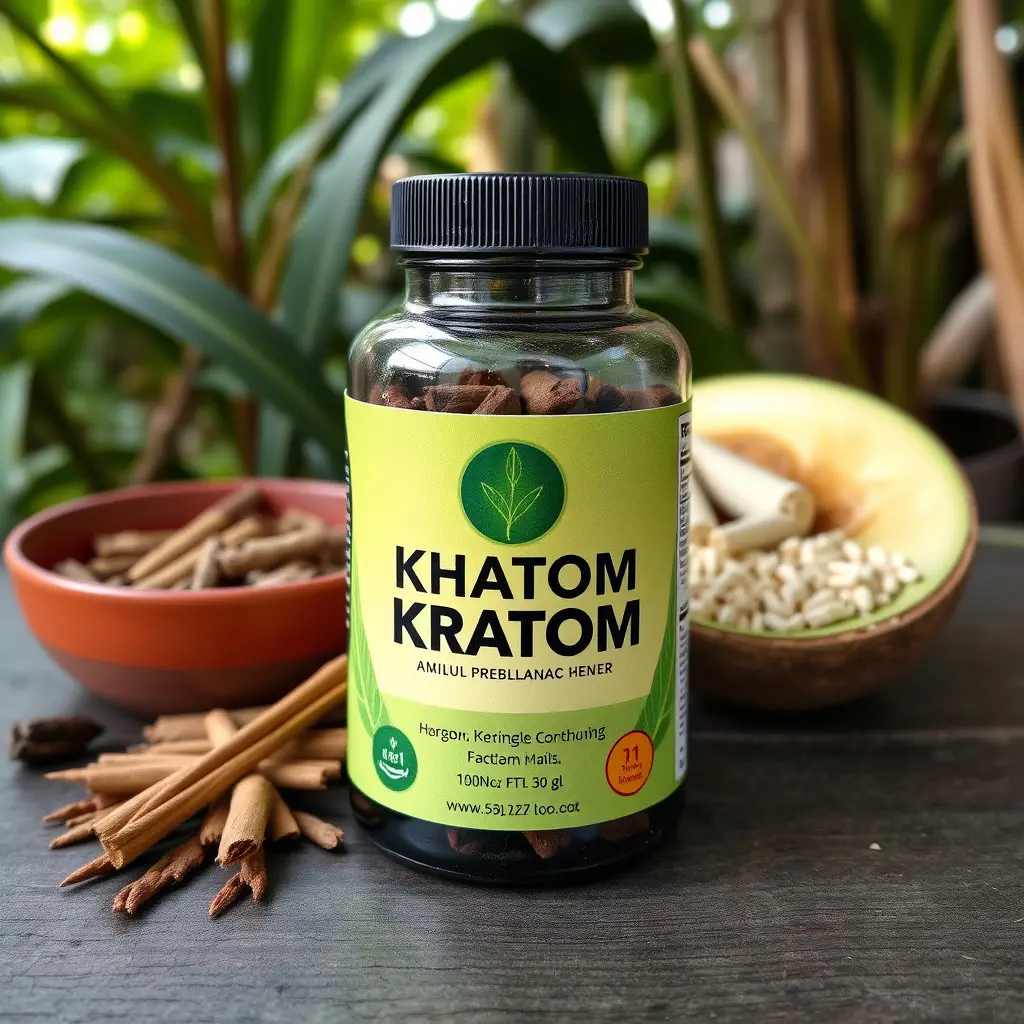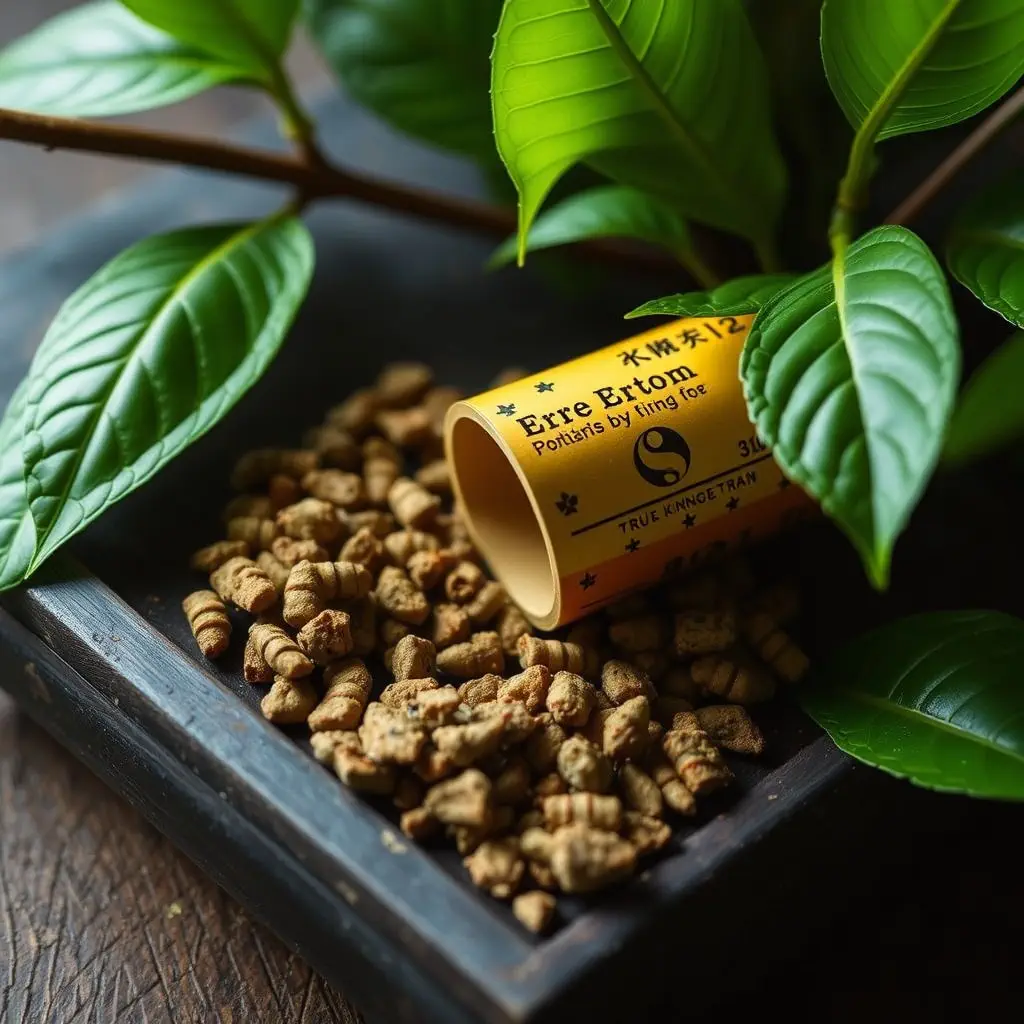Lotus Blue Flower Kratom is a unique variant of Mitragyna speciosa, hailing from Malaysia's verdant environments. It is distinguished by its distinctive blue color achieved through specialized drying and fermentation processes that influence its alkaloid profile. This strain is recognized for its large leaves with prominent veins, signaling its quality. Users often report it enhances mood and promotes relaxation without causing drowsiness, and it offers a stimulating energy boost without the negative side effects of anxiety or jitteriness. Lotus Blue Flower Kratom's cultivation in Malaysia is meticulous, involving optimal climatic conditions and sustainable farming practices to ensure peak alkaloid levels. The harvest targets mature leaves picked early morning for their high alkaloid content. Processing maintains strict hygienic standards to preserve its efficacy and purity. Its therapeutic potential is attributed to its unique alkaloids, 7-hydroxymitragynine and mitragynine, which may interact with opioid receptors and neurotransmitters for pain relief and mood enhancement. Scientific research supports these effects, but it's crucial to use Lotus Blue Flower Kratom responsibly due to its regulatory status and potential interactions with other substances. Users should always consult healthcare providers and follow dosage guidelines to ensure safety and optimal wellness benefits.
Discover the intriguing world of Malaysian Kratom, with a special focus on the Lotus Blue Flower variant. This article peels back the layers to unveil the mysteries surrounding this unique strain and its potential wellness benefits. Delve into the meticulous cultivation and harvesting methods that define Malaysian Lotus Blue Flower Kratom farms, and explore the significant impact it has on users’ health as reflected in both anecdotal experiences and scientific research. Join us as we delve into the multifaceted effects of this botanical wonder, ensuring a comprehensive understanding of its role in holistic well-being.
- Unveiling the Mysteries of Lotus Blue Flower Kratom Buds and Their Potential Benefits
- The Cultivation and Harvesting Process: A Closer Look at Malaysian Lotus Blue Flower Kratom Farms
- Analyzing the Impact of Lotus Blue Flower Kratom on Well-being: User Experiences and Scientific Insights
Unveiling the Mysteries of Lotus Blue Flower Kratom Buds and Their Potential Benefits

Lotus Blue Flower Kratom buds, a variant of the Mitragyna speciosa plant, have long been a subject of intrigue due to their unique appearance and purported effects. Harvested from the lush landscapes of Malaysia, these buds are recognized by their distinct blue hue, which is a natural result of the specific drying and fermentation process they undergo. This process not only imparts a unique color but also influences the alkaloid content within the leaves, potentially enhancing the experiences associated with their consumption. The Lotus Blue Flower Kratom is prized for its fine veins and large leaf structure, which contribute to a superior quality product.
Users have reported a variety of potential benefits from consuming Lotus Blue Flower Kratom buds, which include mood elevation and a sense of calm without the sedative effects typically associated with other strains. The strain’s stimulating properties are also noted for providing an energetic boost without the jitteriness that can accompany more robust kratom variants. Additionally, some users report using Lotus Blue Flower Kratom as part of their wellness routine to support overall health and vitality. As with any botanical supplement, it is crucial to approach its use responsibly, adhering to recommended dosages and consulting with healthcare professionals, especially when considering combining it with other medications or supplements. The potential benefits of Lotus Blue Flower Kratom buds continue to be explored by those interested in the natural properties of kratom for wellness and balance.
The Cultivation and Harvesting Process: A Closer Look at Malaysian Lotus Blue Flower Kratom Farms

Nestled within the verdant landscapes of Malaysia, the cultivation of Lotus Blue Flower Kratom is a meticulous process that showcases the country’s rich biodiversity and agricultural expertise. The farms dedicated to this unique strain are often found in regions with optimal climatic conditions, characterized by consistent rainfall and well-drained fertile soils. The cultivation begins with selecting mature lotus trees, which have grown wild or have been nurtured for their superior alkaloid content. Farmers carefully graft these onto robust rootstocks to ensure a strong and productive crop.
Throughout the year, the farms are a symphony of sustainable farming practices. As the Lotus Blue Flower Kratom trees mature, they are pruned and maintained to encourage robust growth. The harvesting process is equally deliberate, with farmers picking only the most mature leaves, typically during the early morning hours when the alkaloid levels are at their peak. These leaves are then carefully processed, dried, and packaged under hygienic conditions to maintain their potency and purity. This dedication to quality control ensures that each batch of Lotus Blue Flower Kratom meets high standards for consumers seeking its unique effects and therapeutic properties.
Analyzing the Impact of Lotus Blue Flower Kratom on Well-being: User Experiences and Scientific Insights

Lotus Blue Flower Kratom, a strain derived from the Mitragyna speciosa tree, has garnered attention within wellness circles for its potential effects on mental and physical well-being. User experiences often report a sense of tranquility and relaxation, with some noting improved mood and focus without the sedative overload associated with higher doses of Kratom. The alkaloids present in Lotus Blue Flower Kratom, such as 7-hydroxymitragynine and mitragynine, are thought to contribute to these effects, interacting with the body’s opioid receptors and neurotransmitter systems. Scientific insights further support user anecdotes, suggesting that this strain may offer pain-relieving properties and a mild stimulant effect at lower doses, making it a popular choice for those seeking balance in their daily lives. However, it is crucial to approach such substances with caution, adhering to recommended dosages and consulting healthcare professionals before incorporating Lotus Blue Flower Kratom into any wellness regimen, given its regulatory status and potential interactions with medications. Users are encouraged to prioritize safety and monitor their responses when experimenting with this or any other Kratom strain to enhance overall well-being.
In conclusion, the Lotus Blue Flower Kratom buds from Malaysia have captivated the attention of researchers and enthusiasts alike, offering a unique perspective in the realm of herbal supplements. The intricate cultivation process, which is detailed in ‘The Cultivation and Harvesting Process: A Closer Look at Malaysian Lotus Blue Flower Kratom Farms,’ ensures the preservation of its potent properties. The comprehensive exploration in ‘Unveiling the Mysteries of Lotus Blue Flower Kraitom Buds and Their Potential Benefits’ has shed light on the plant’s rich potential, while user experiences and scientific insights presented in ‘Analyzing the Impact of Lotus Blue Flower Kratom on Well-being: User Experiences and Scientific Insights’ underscore its promising effects on overall wellness. As these findings continue to evolve, it is clear that Lotus Blue Flower Kratom represents a significant contribution to holistic health practices.






